Halberd - a weapon of changeable fate
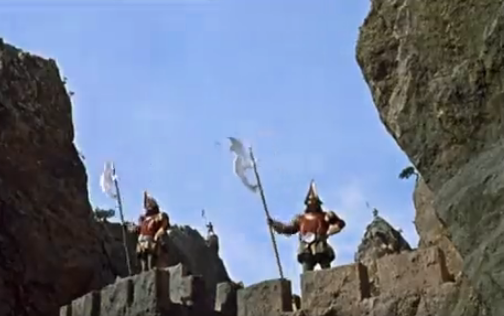
Perhaps the most unusual halberd was shown to us in the cinema - in the film "The Kingdom of Crooked Mirrors" (1963) based on the fairy tale by V. Gubarev. Its "clumsy" part was made in the form of a parrot and looked not only fabulous, but also very stylish! Frame from the film "The Kingdom of Crooked Mirrors"
They will clear the way for the prisoners of the slaves.
Let them announce again that all
The hosts must, under pain of death
Keep your henchmen at home. Every
С weapons let it be at the threshold
For disobedience to all to answer.
"Sir Thomas More", William Shakespeare
History weapons. The well-known weapons historian Vendalen Beheim writes in his “Encyclopedia of Weapons” that the word halberd comes from the German Helm (helmet) and Barte (axe beard), but then, they say, it got into other languages and was accordingly distorted, turning into a halberd. Be that as it may, but since the beginning of the XIV century it has already been known in the usual spelling for us. In the battles of Morganten (1315) and Sempach (1386), it was the halberd, which was in service with the Swiss infantry, that brought them victory. It turned out that this hybrid of a spear and an ax is very effective against armor that appeared at that time from metal plates superimposed on chain mail. The ax - chopped, the tip of the spear - pricked, and the hook on the butt made it possible to pull the riders off the horse, hooking them on the patched clothes. An extensive collection of halberds is in the Metropolitan Museum of New York, and we will get to know her today. Although, of course, not with all of its samples, because there are more than ... 200 of them!
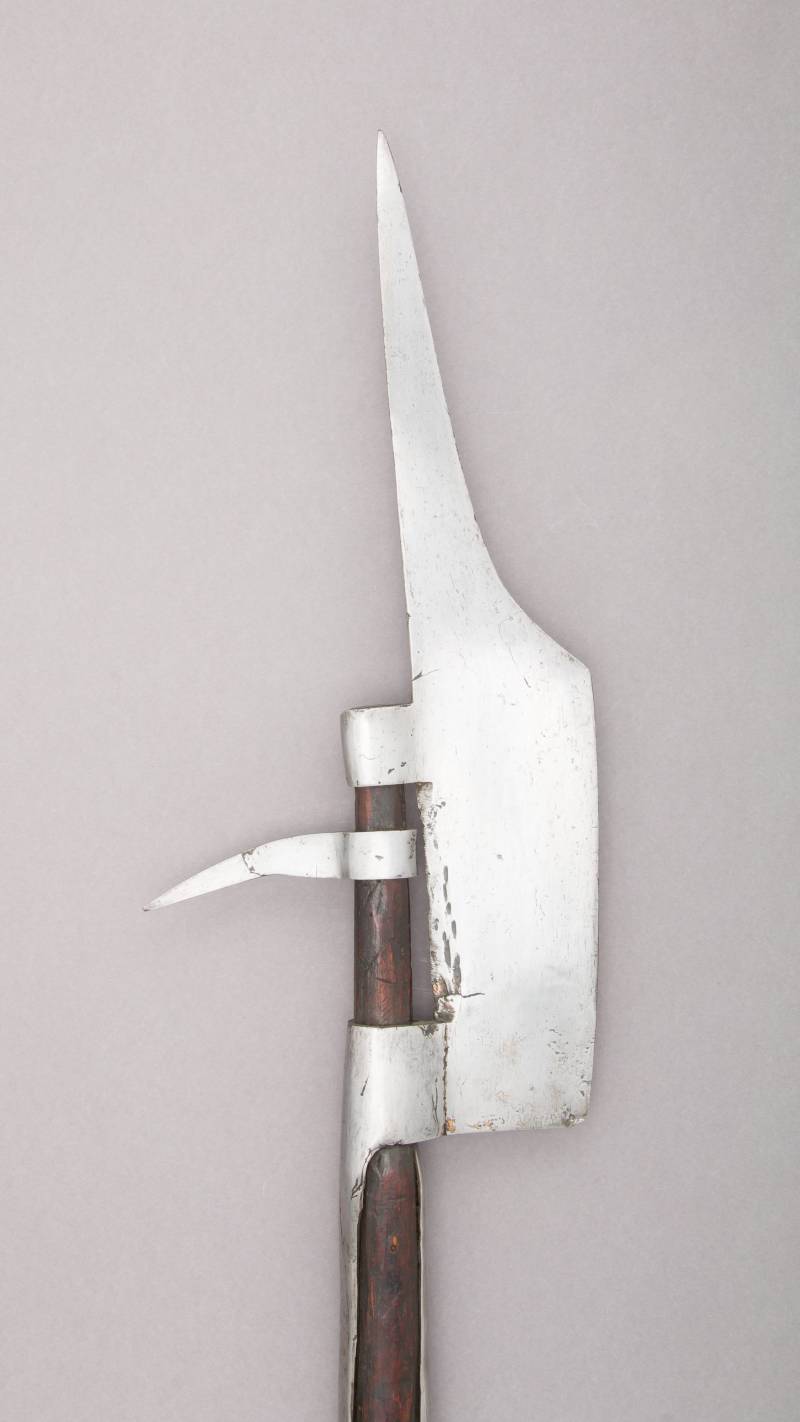
Swiss halberd 1375-1400 from Freiburg. Length 213,9 cm; tip length 45 cm; weight 2409,7 g
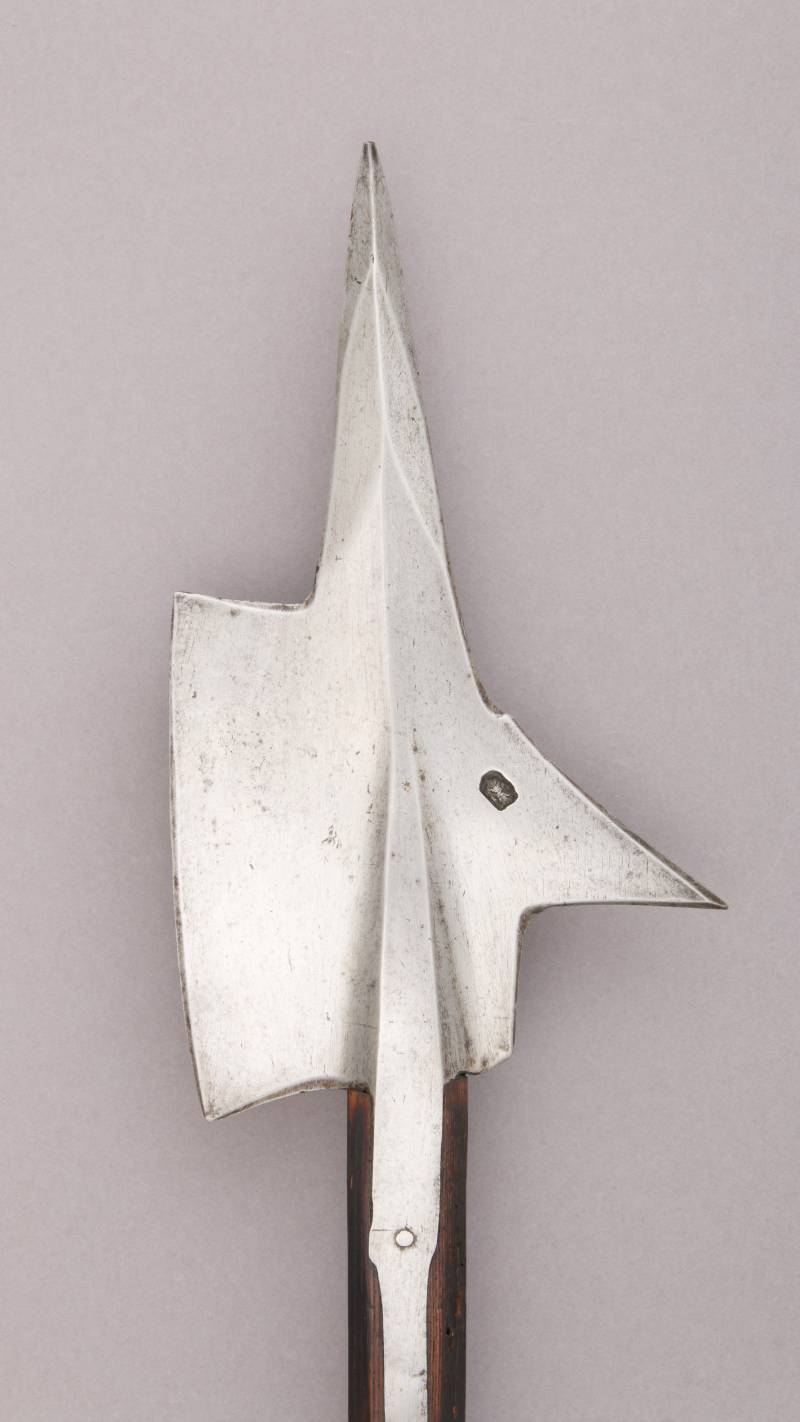
Swiss halberd 1380-1430 Length 194,9 cm; warhead length 31,8 cm; weight 2040 g
Note that the halberd, unlike the spear, was a rather metal-intensive weapon and therefore was quite expensive. In addition, she had a rather large weight, which just allowed the warrior armed with her to crush any armor. At the same time, like any other weapon, the halberd was constantly changing. Moreover, it changed both in time and in space, since halberds in different countries were not similar to each other, differing in both shape and size. For example, the German and Italian halberds were very different.
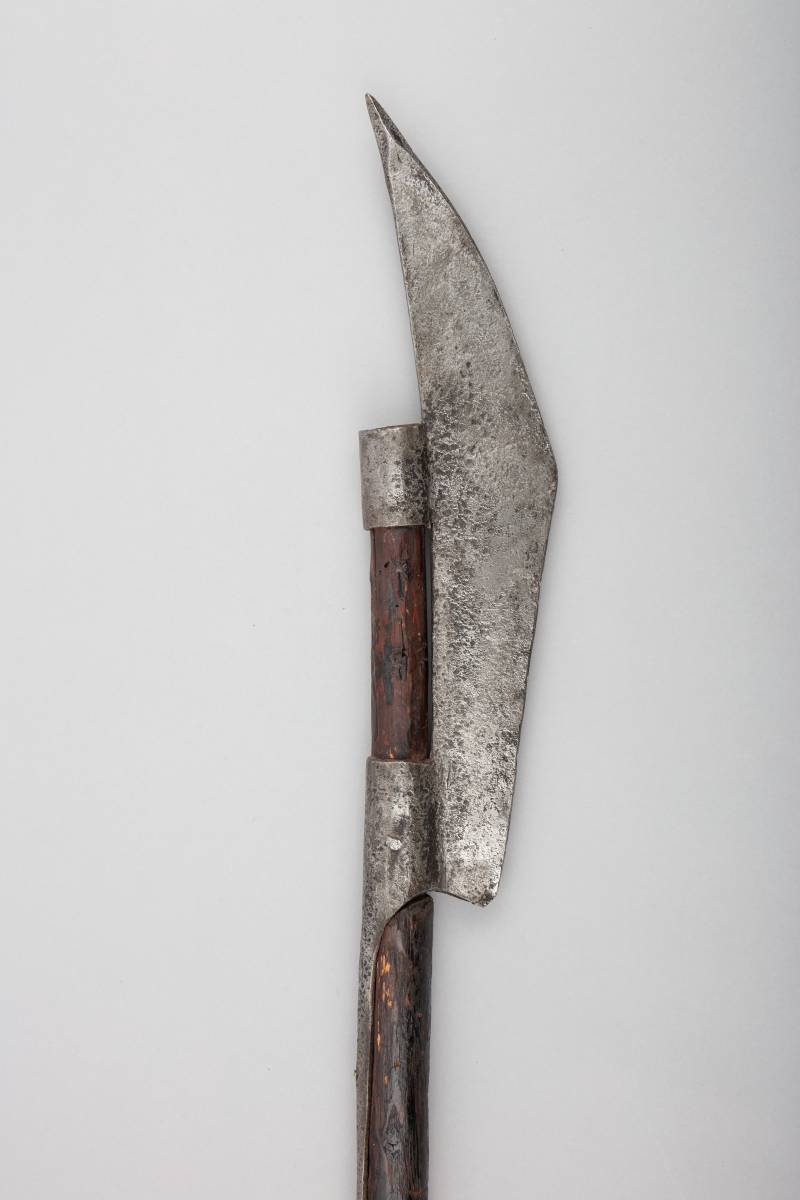
Some halberds were quite primitive. For example, this Swiss halberd from about 1400 is 199,39 cm long.
In the XIV-XV centuries. it was the halberd that was the most common weapon in the infantry, and halberdiers were found in all European armies. But at the end of the XNUMXth century, when the German landsknechts were armed with a long spear, the halberd had to give up its position somewhat. Now only the most experienced warriors began to use it, and it also became the distinctive weapon of junior officers.
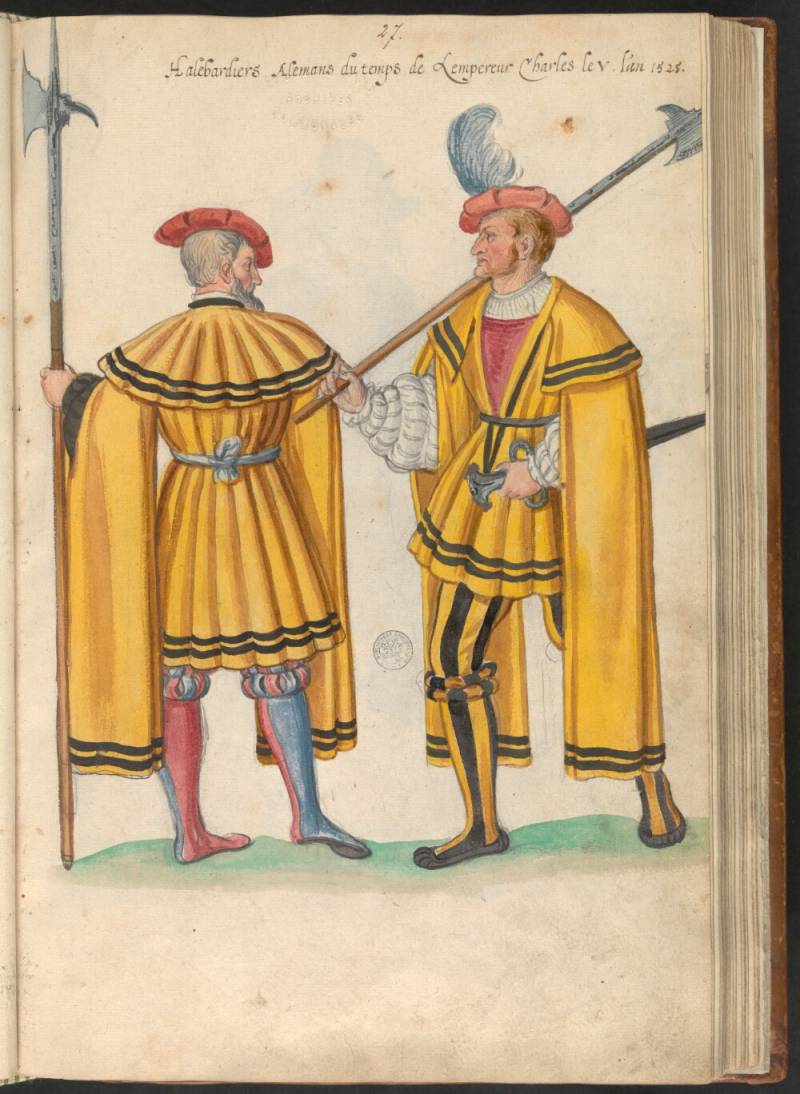
Illustration depicting halberdiers from the book "The Theater of All Peoples and Nations of the Earth with their various clothes and decorations, both ancient and modern, painstakingly depicted in nature." Lucas d'Heer, Second half of the XNUMXth century Ghent University Library
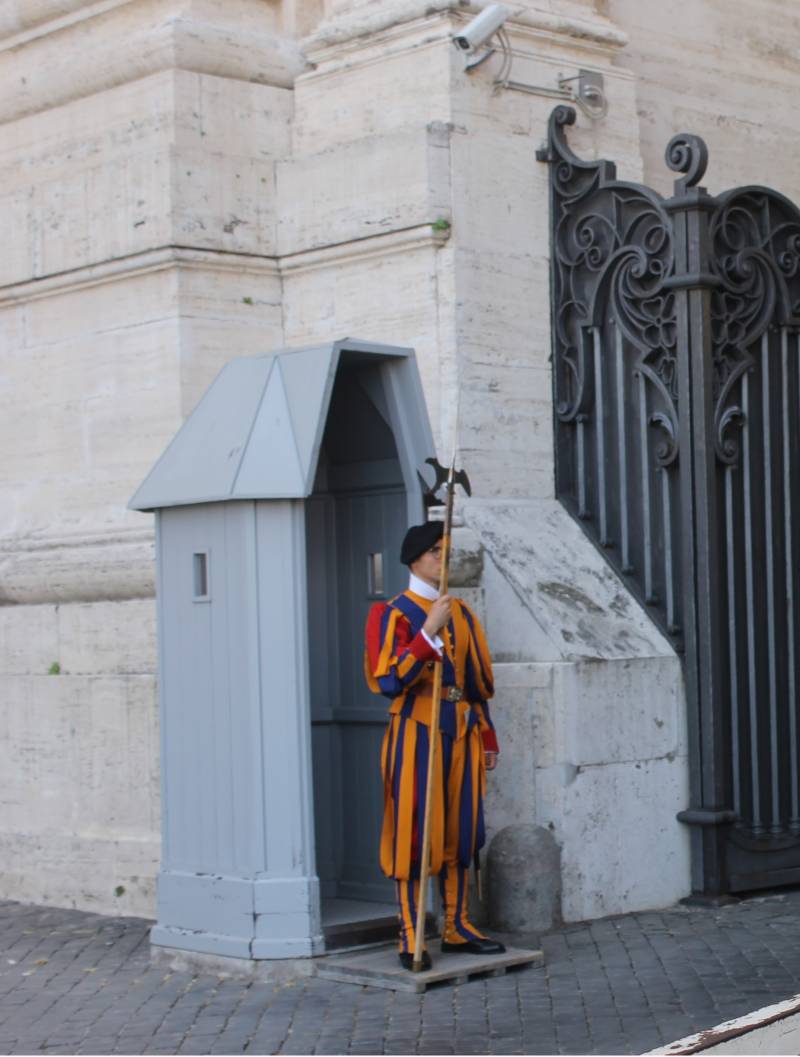
Papal guard with a halberd. Rome, Vatican. Author's photo
As such, it served the entire XNUMXth century, but in the XNUMXth century it almost completely disappeared as a weapon. But on the other hand, both in the days of peace and in war, the halberd was for a long time the weapon of the Life Guards, guarding the person of the Austrian emperor. And the Swiss Guard of the Vatican is still armed with halberds.
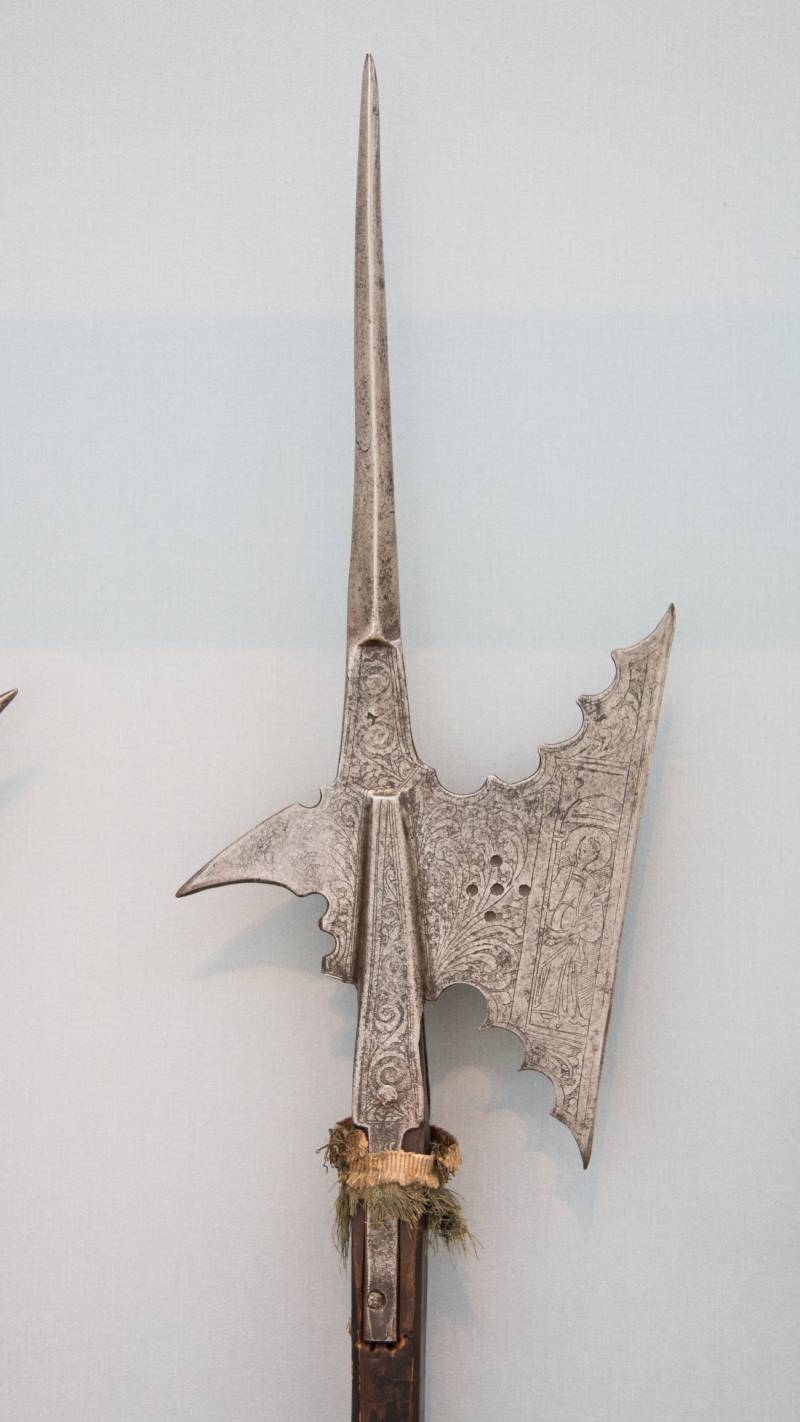
Here is how, for example, the Italian halberd of 1500-1525 looked like. Overall length 235,6 cm, warhead length 54,9 cm
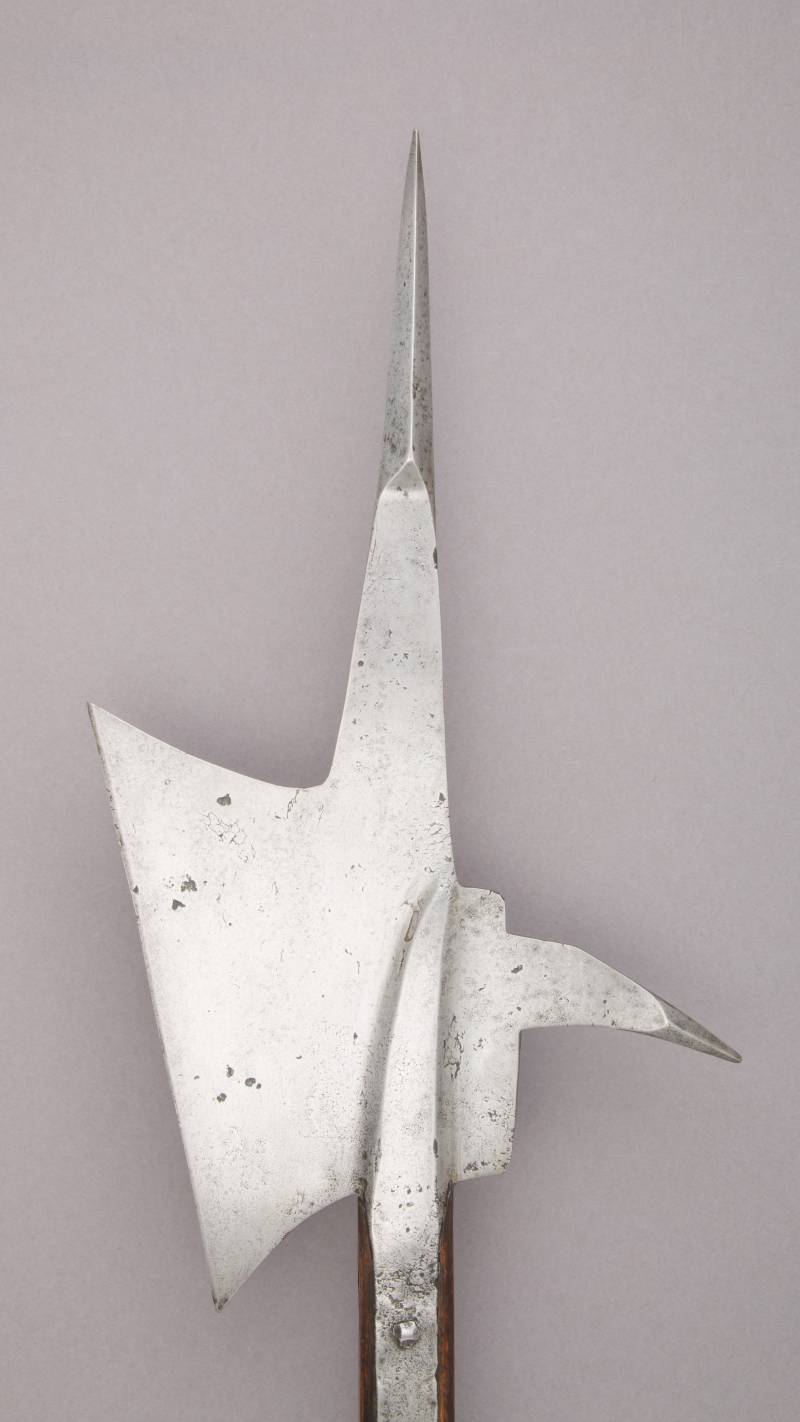
Swiss halberd around 1510-1520 Overall length 190,4 cm; warhead length 42,8 cm; weight 2750 g
Considering the halberds of different times and nationalities, it is easy to see that, having been born precisely as a military weapon, the halberd eventually became less and less suitable for combat use. The Renaissance period, which gave it very elaborate forms, especially influenced the shape of the halberd.
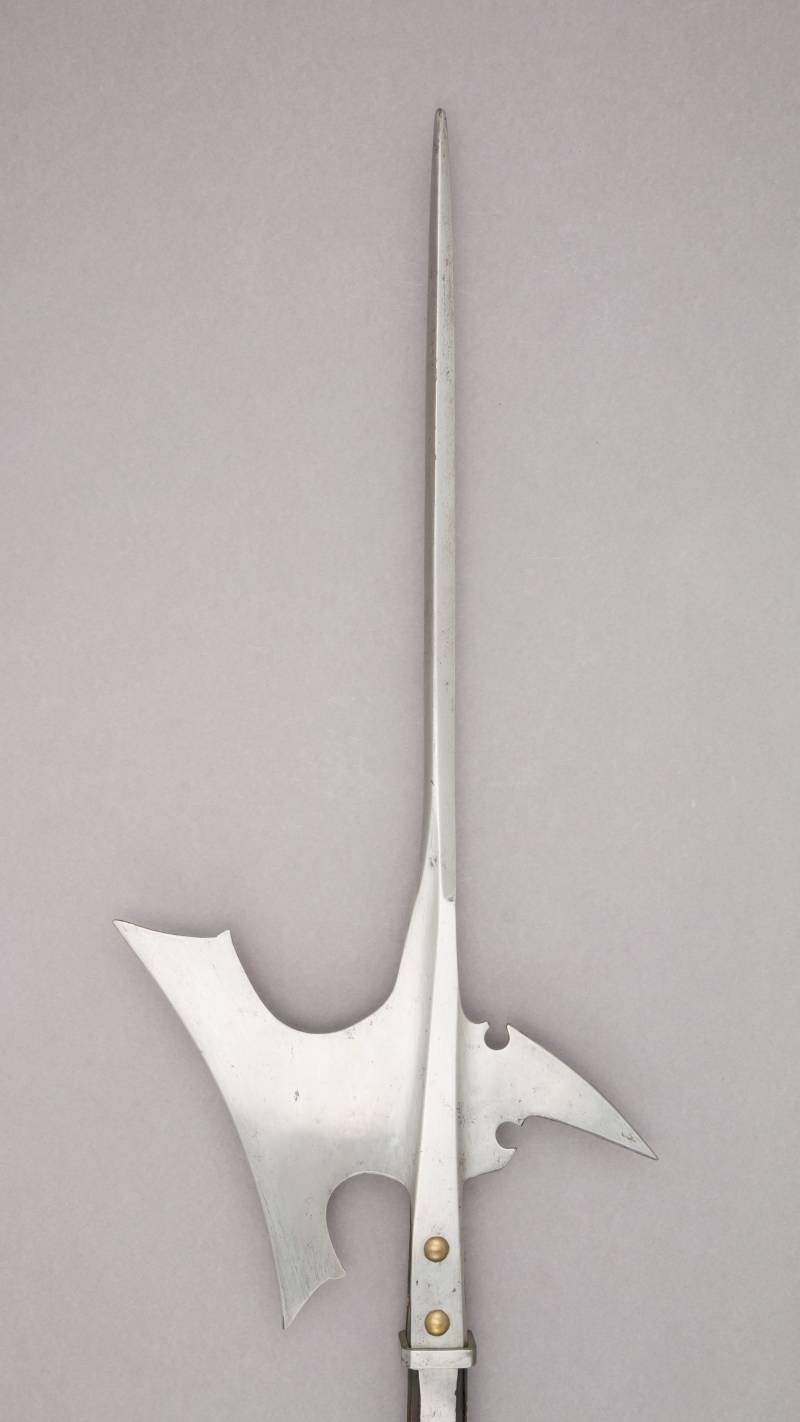
Italian halberd ca. 1530. Total length 221,6 cm; warhead length 62,3 cm; weight 2381,4 g
For some reason, already at the beginning of the XNUMXth century, a very long awl-shaped tip appeared on Italian halberds, and all other parts greatly decreased in size, including the ax blade, which also acquired the shape of a reverse full moon. That is, it was more convenient to stab with such a halberd than to chop, but the sharp hook on its warhead remained practically unchanged. Weight, respectively, also decreased.
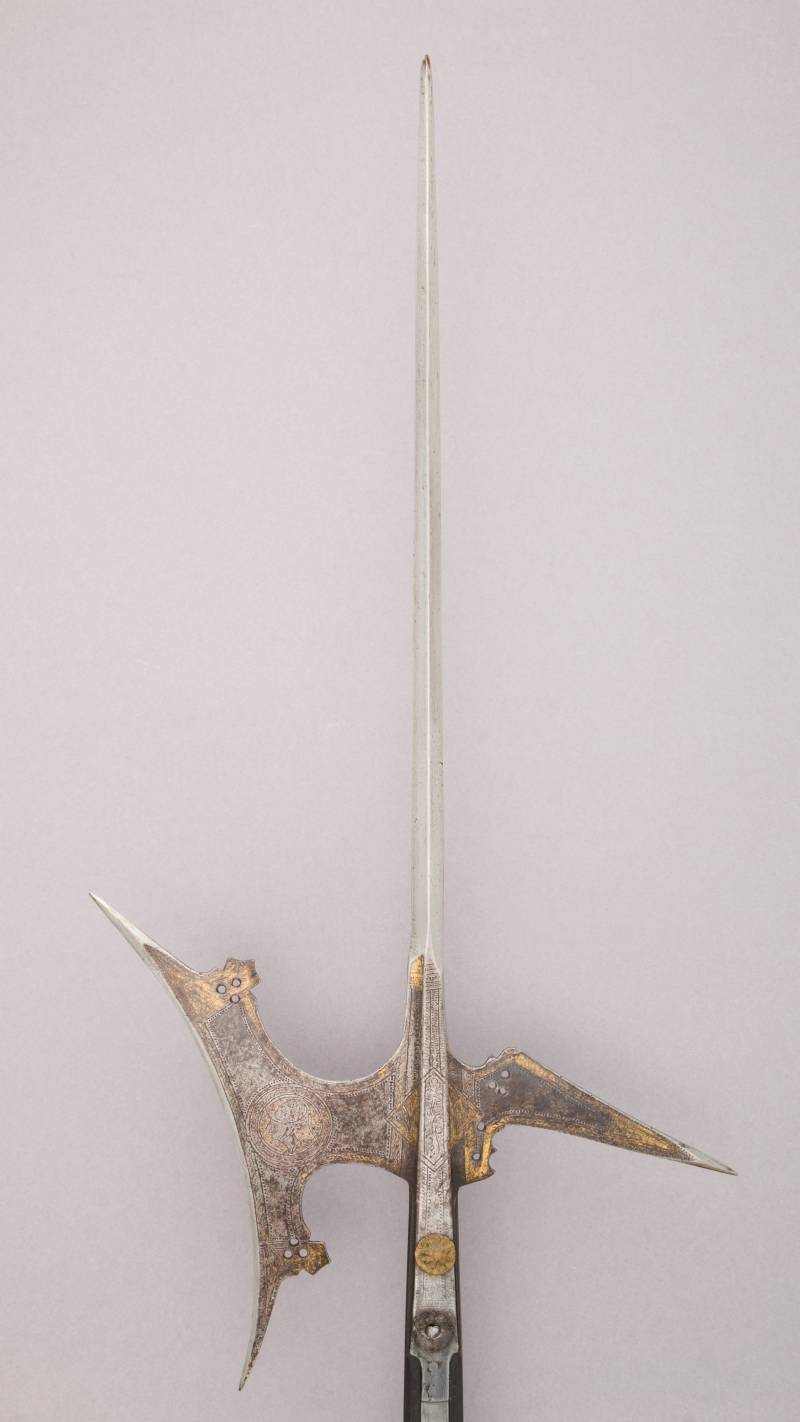
Italian halberd 1550. Overall length 223,1 cm; warhead length 61,3 cm; weight 1730 g
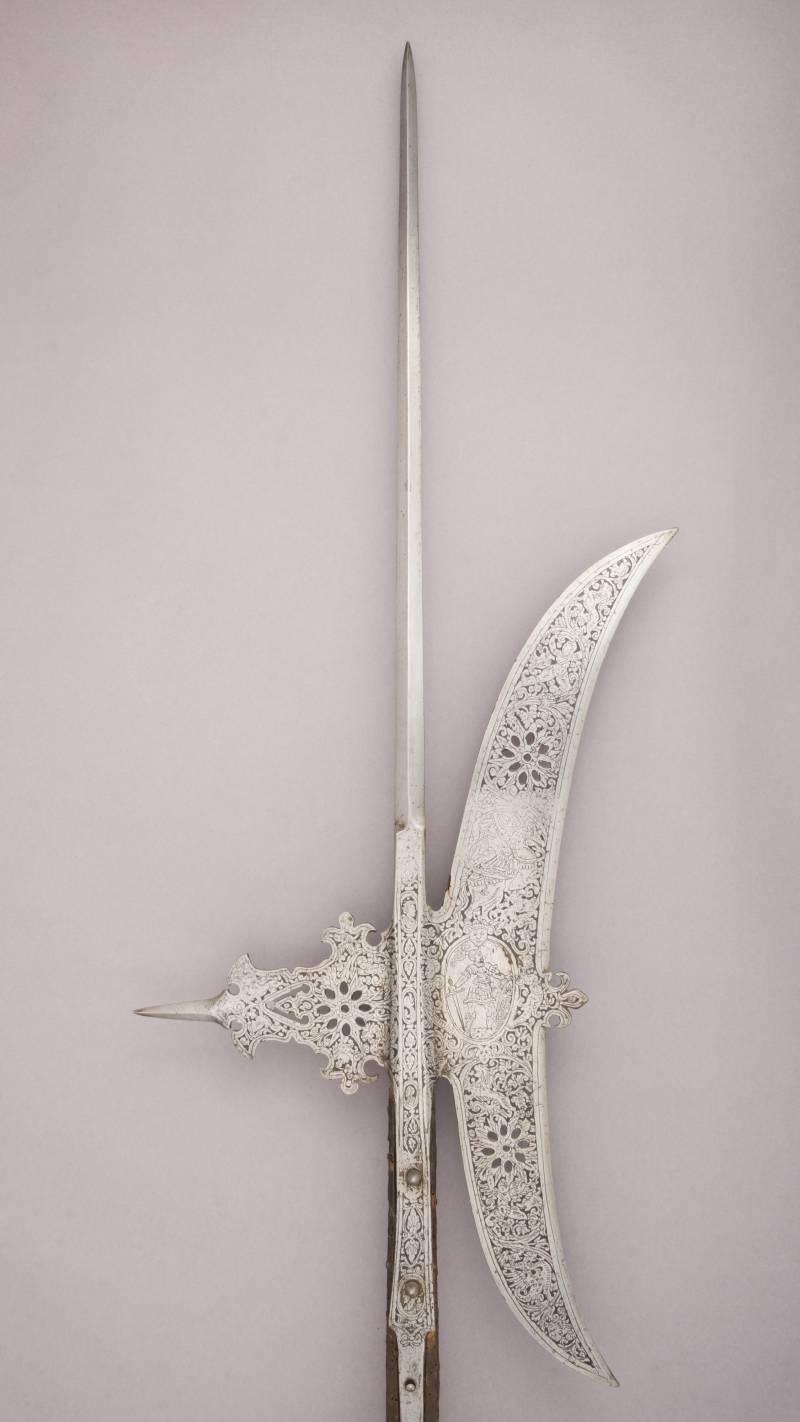
Italian halberd with a frightening moon-shaped ax handle, ca. 1575. Overall length 265,4 cm; warhead length 93 cm; weight 3883,9 g. It is clear that such a halberd simply could not have any combat value
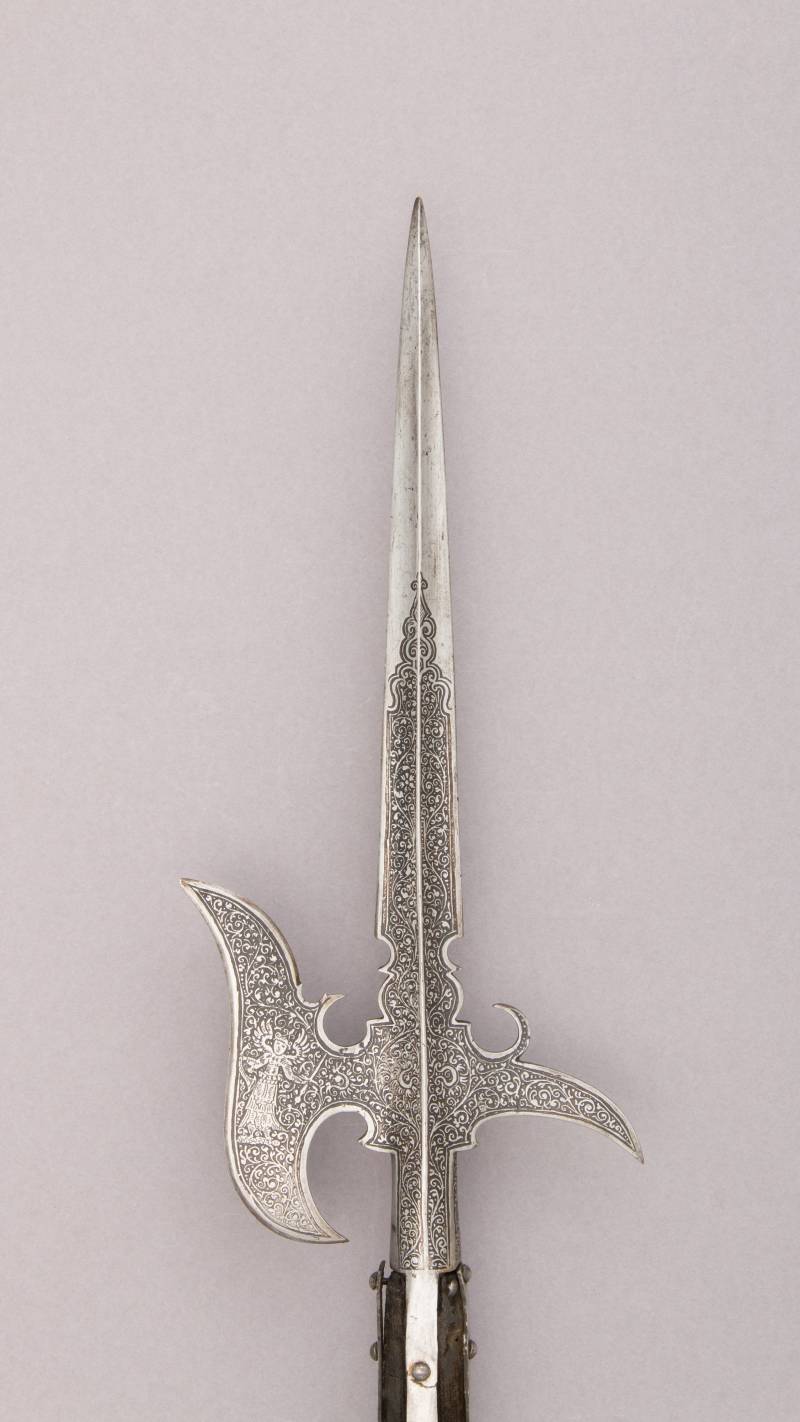
German halberd ca. 1590. Decorated with an engraving depicting a winged Valkyrie with a sword and horn. Total length 203,8 cm; warhead length 24,9 cm; weight 1298,4 g
In general, halberds have really turned into works of weapons art. They began to make slotted blades and hooks, decorate with niello and gilding, engrave patterns, coats of arms and images. It is clear that, according to the finish, their price also increased, so that from a mass weapon, the halberd gradually turned into a prestigious weapon, which is now being made by special order.
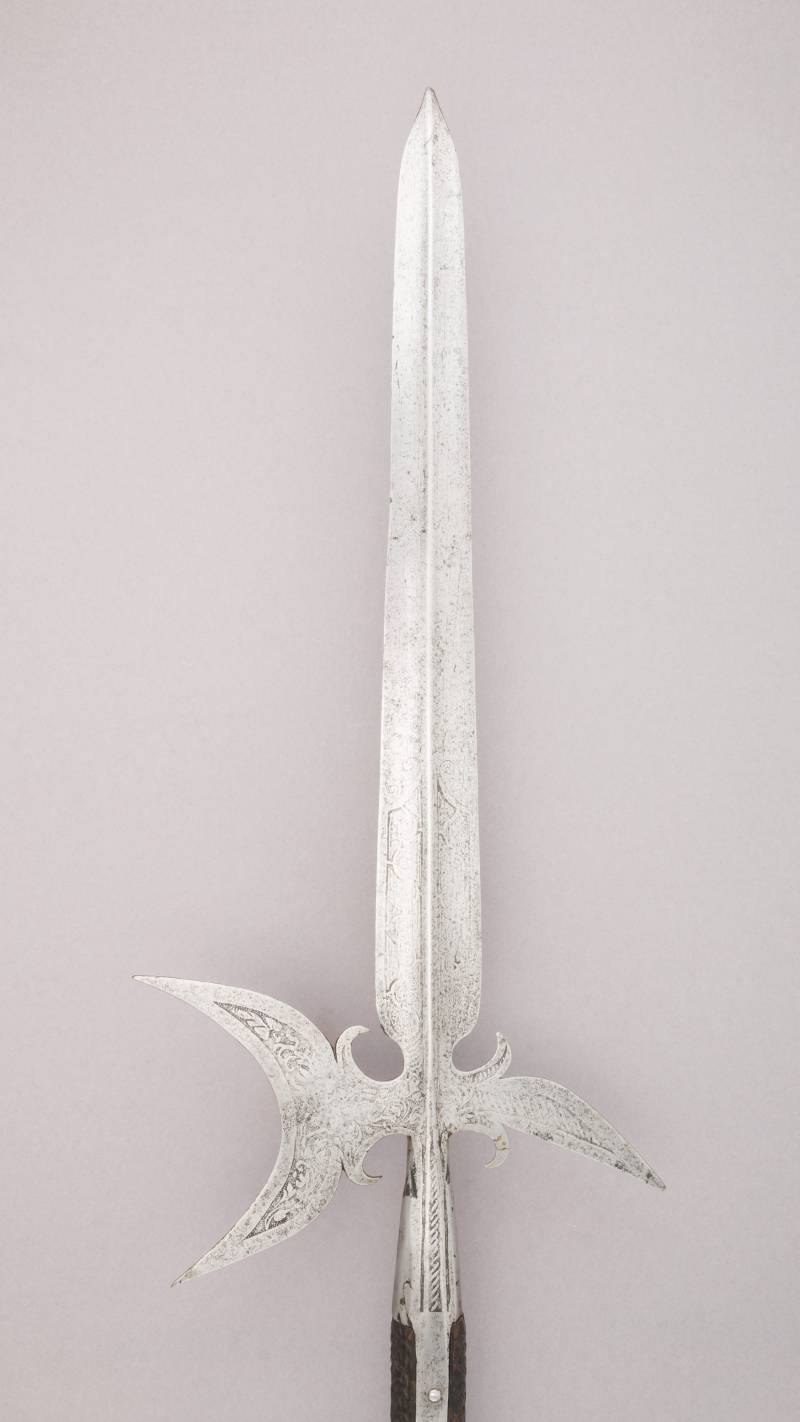
German halberd ca. 1600. Total length 238 cm; warhead length 63,5 cm; weight 2810 g
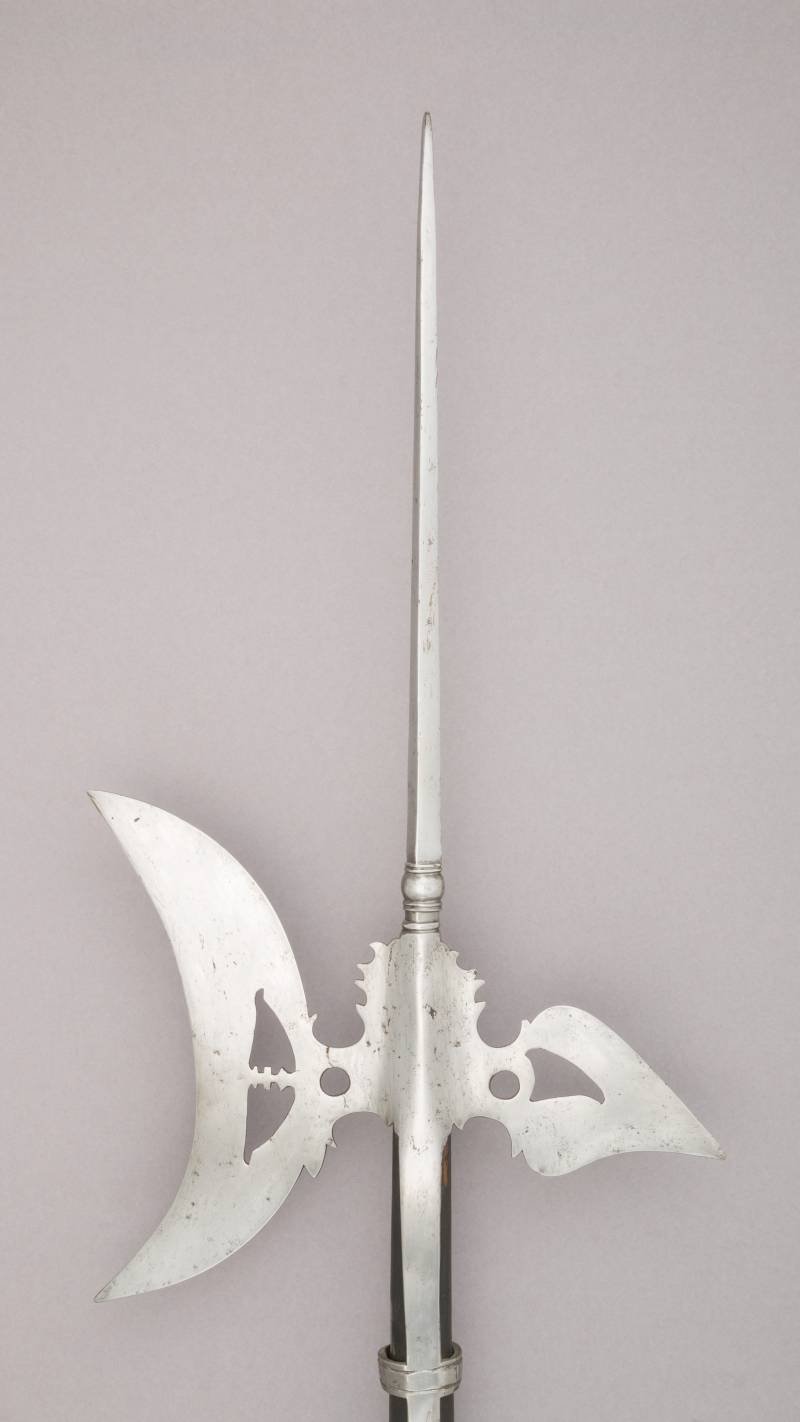
Flemish halberd c. 1620. Overall length 236,3 cm; warhead length 56,2 cm; weight 1640 g
Since now the personal guards of Western European sovereigns are increasingly armed with halberds, in addition to the rich decoration, the image of the coat of arms of one or another royal person is placed on the halberds, for example, as on the halberd of the Austrian Archduke Ferdinand II ...
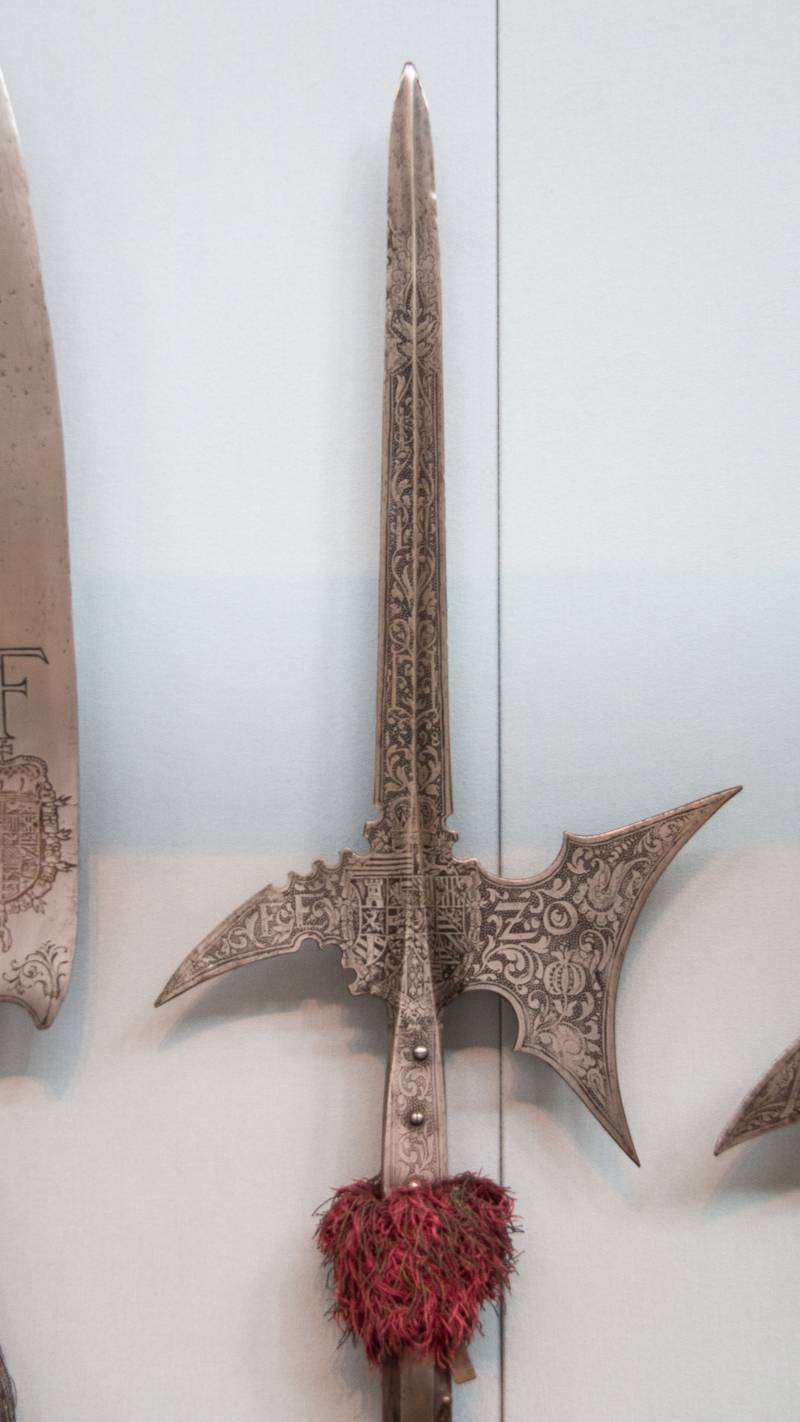
Halberd of the guard of the Archduke Ferdinand II of Austria (1578–1637, Emperor from 1619). Dated 1598. Made in Germany. Total length 252,7 cm; warhead length 61,6 cm; weight 2750 g
Some of the halberds on display at the Metropolitan Museum of Art have an absolutely amazing history. Or related to important historical events. For example, this one...
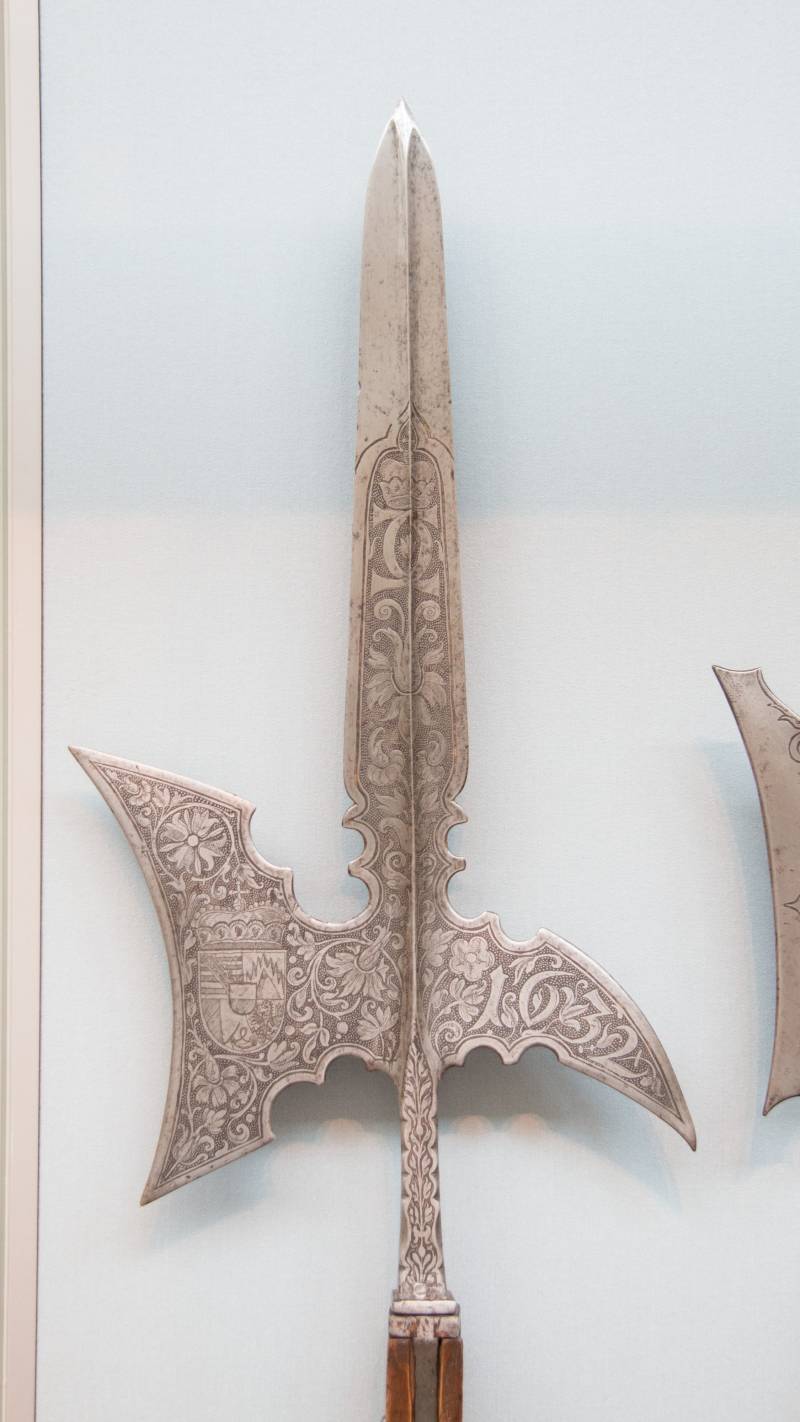
Halberd of Prince Karl Eusebius of Liechtenstein (1611–1684). The pommel of the halberd, consisting of an ax blade with a strongly concave cutting edge, a wide double-edged stabbing blade with a strong median ridge, and a hook bent down, is almost completely covered with etched ornamentation. On one side of the ax blade are engraved the coats of arms of the princes of Liechtenstein, and on the other side an oval medallion with the emblem of a hand wielding a hammer striking a pointed anvil, the personal badge of Charles Eusebius, Prince of the Empire and regent of the House of Liechtenstein, and the inscription VIRTUTE ELUDITUR ICTUS ("Thanks to virtue he avoids punches). The hook bears the date "1632". The coat of arms and monograms are surmounted by the crown of the Prince of the Empire. The angles between the three blades - the ax tip and the hook - are decorated with decorative points. The sleeve has a square section and is attached to a tetrahedral shaft with four side langets. The Liechtenstein family coats of arms are depicted on the ax blade. The Princes of Liechtenstein are an old Austrian family; their family castle (now destroyed) is located near Vienna. From the 1627th to the 1613th century, they collected vast possessions in Bohemia, Moravia and Silesia (now the Czech Republic, Slovakia and Poland). Prince Karl (died 1623), father of Prince Karl Eusebius, whose monogram is engraved on this halberd, annexed the Silesian Duchy of Troppau in 1656 and the Duchy of Jägerndorf in 1712. The son of Charles Eusebius, Johann Adam Andreas (1708–1719), acquired Vaduz in 230,17, which in 62,23 received the status of a principality and is now the principality of Liechtenstein. Overall length 3374 cm; warhead length XNUMX cm; weight XNUMX g
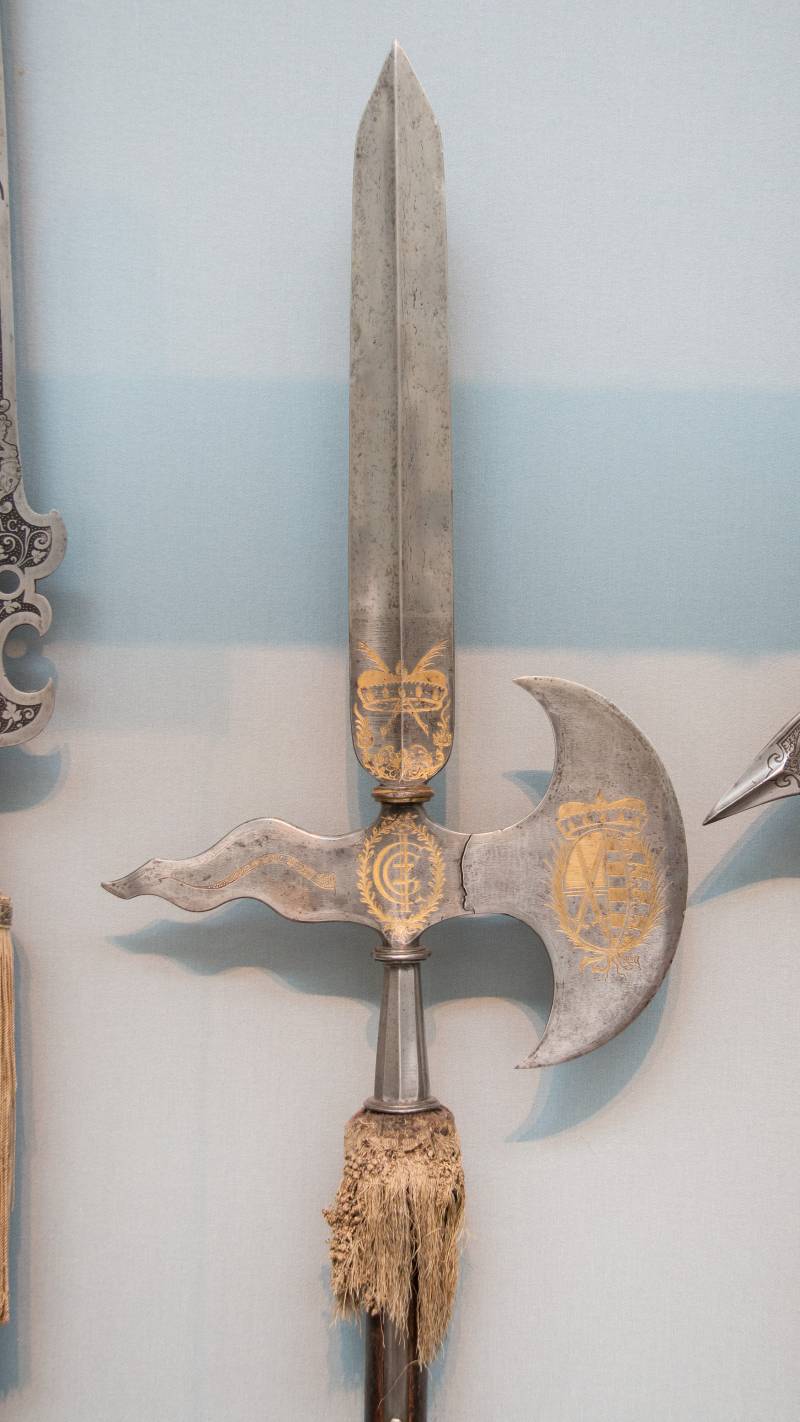
Halberd of the Swiss Guard of Johann George II of Saxony (r. 1656-1680), 1680 Germany. Length 220,98 cm
It is interesting that halberds were produced in rather large quantities in America, on the territory of the British colonies. Such was the strength of tradition and the strength of the opinion that "this is necessary", although it is difficult to imagine that at least one of the colonists would go on an expedition against the Indians, taking a halberd as a weapon. On the other hand, archaeologists have repeatedly found such a weapon as a bill, which is nothing more than one of the varieties of a halberd, during excavations on the territory of Jamestown in Virginia, which suggests that it was ... used!
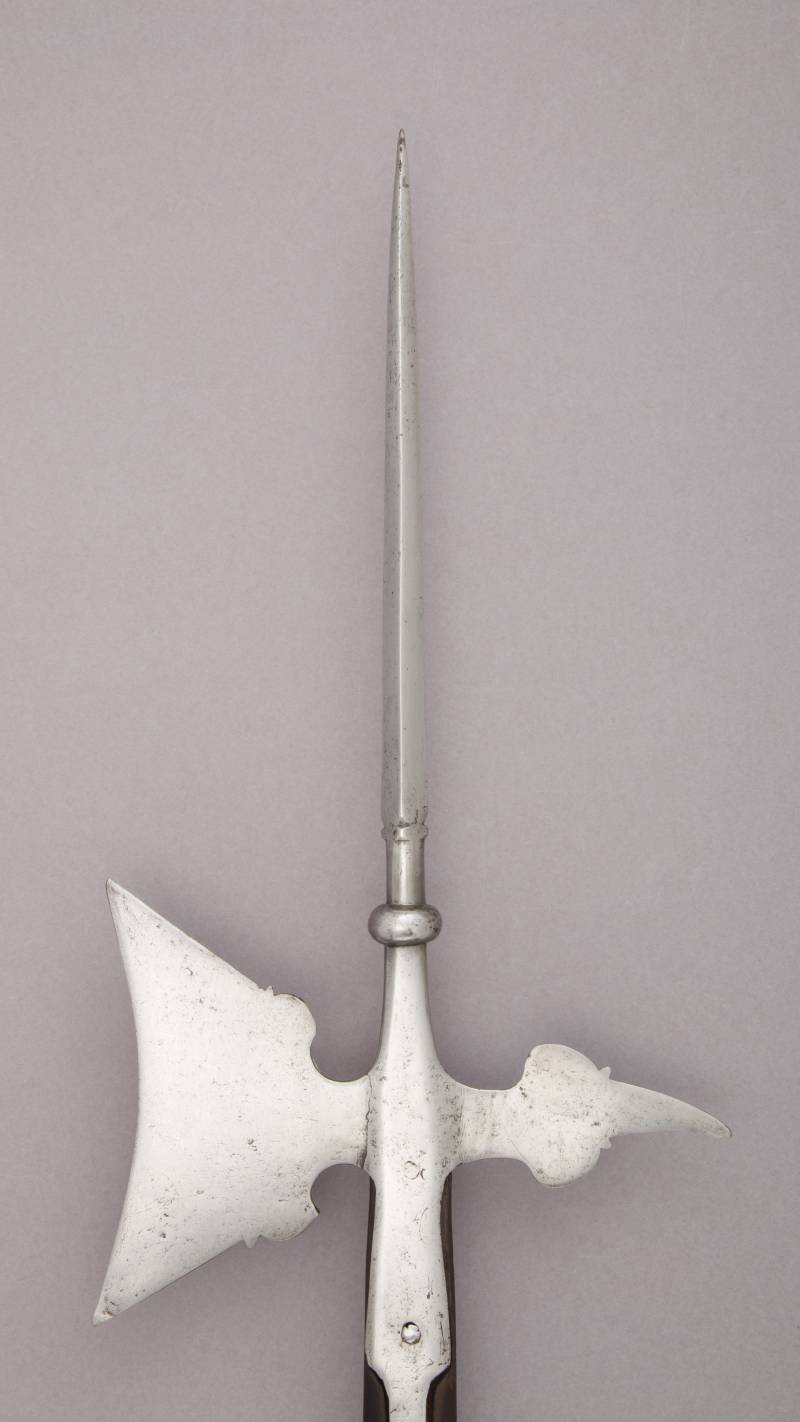
American halberd, ca. 1620 State of Connecticut. Overall length 221 cm; warhead length 46,4 cm; weight 1743,5 g
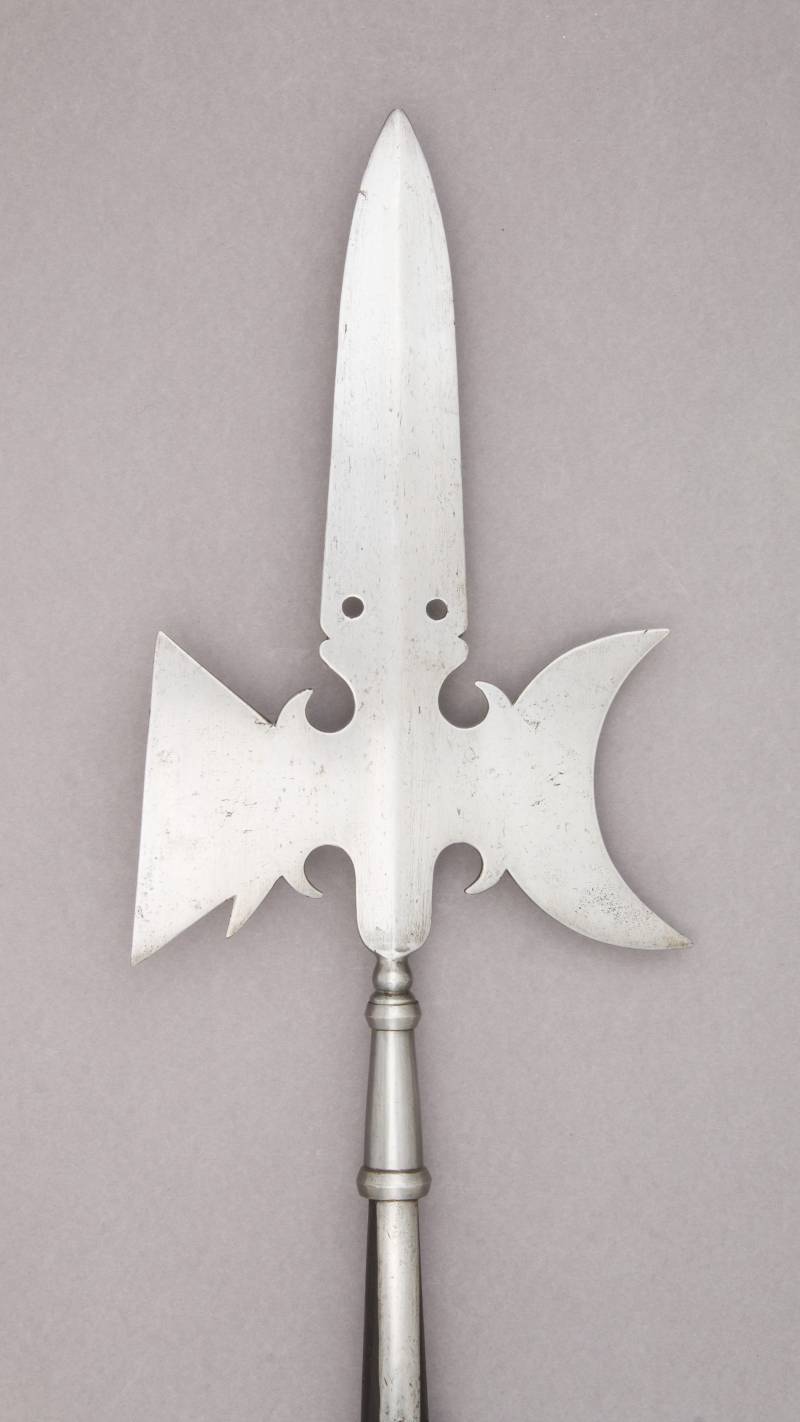
German halberd 1650-1700 Overall length 206,4 cm; warhead length 38,1 cm; weight 1275,7 g
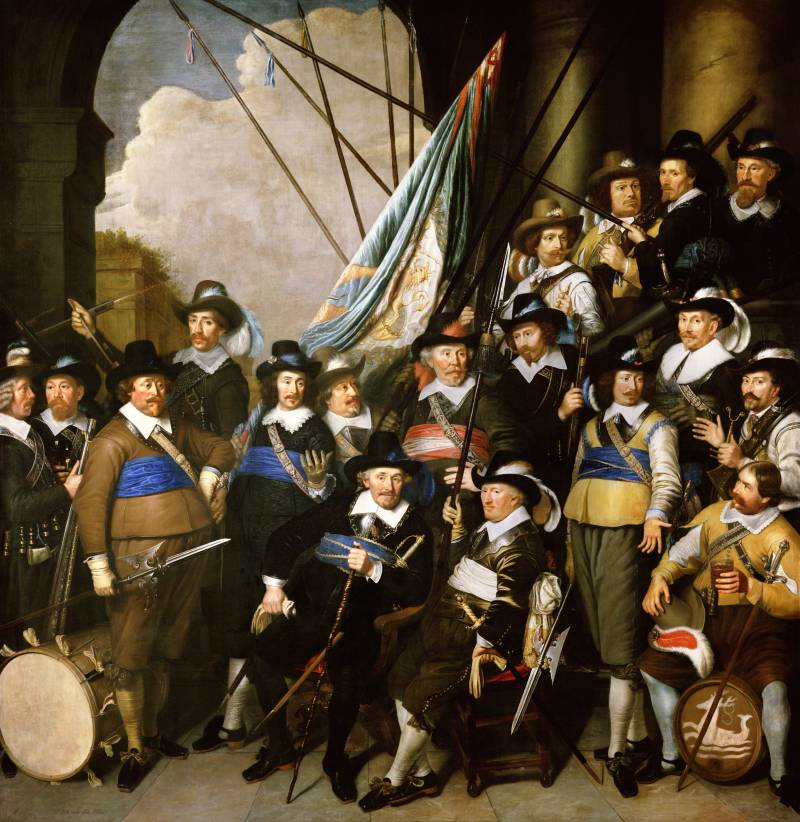
Painting by the Dutch artist Jan Alberts Rotius (1624–1666): “The Company of Captain Sein Koninka”, 1649. Another group portrait of the Dutch militias. It also perfectly depicts two halberds at once. Westfries Museum
There were many varieties of halberds. Moreover, Vendalen Behaim also refers to them a rather strange weapon called rancona, which he considered a kind of Italian halberds ...
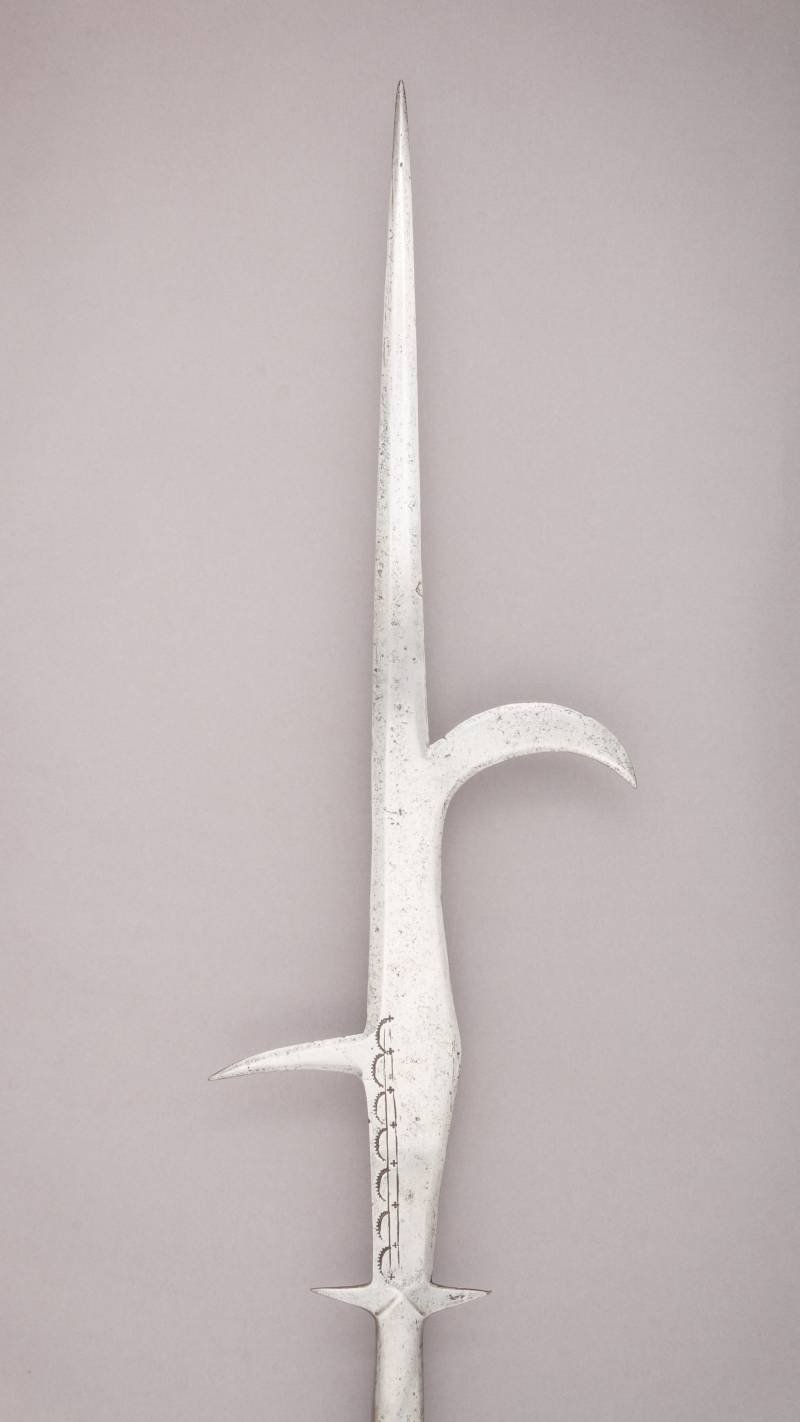
The combat part of the rancona of 1500 consists of a long double-edged piercing-chopping blade with a cutting edge on one side, turning into a strongly curved hook, and on the back side having a sharp spike sticking out at a right angle. Two short spikes at the base of the blade serve as a guard. The reverse side is stamped with a simple ornament of dots and crescent lines. It is believed that such a weapon was developed on the basis of an agricultural tool - a hook, with which a farmer cut unnecessary branches from his fruit trees. It was especially popular in the countries of Western Europe, where it was one of the equivalents of a halberd. In England, he was called "bill", and there was even such a cry as "bills and bows", that is, a call to arm spearmen and archers. It appears to have been one of the few polearms used by the Spanish conquistadors and early English colonists in the New World. Dimensions: length 247,7 cm; warhead length 88,9 cm; weight 2182,9 g
Information